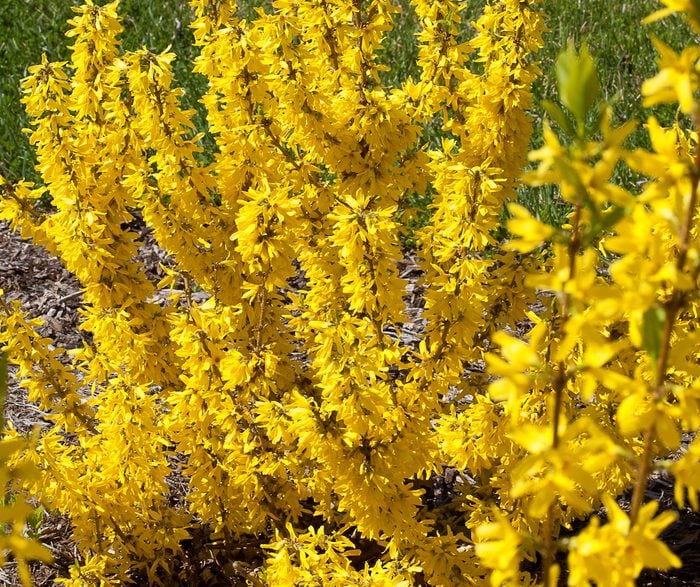
Forsythia
Forsythia spp., Zones 4 to 8
When forsythia blooms, it’s a signal that warm spring days can’t be far behind. This cheery yellow flowering shrub looks like spring sunshine, with blooms covering graceful bending branches. Bees and early spring butterflies flock to this nectar source. Forsythia blooms best in full sun but this shrub can tolerate some shade. Far northern gardeners should try the Meadowlark cultivar, which is hardy to zone 3.
Why we love it: Ranging from 2-foot dwarf varieties to those reaching 10 feet high and wide, forsythia shrubs fit in any garden or landscape.
Check out the top 10 flowering bushes for your yard.
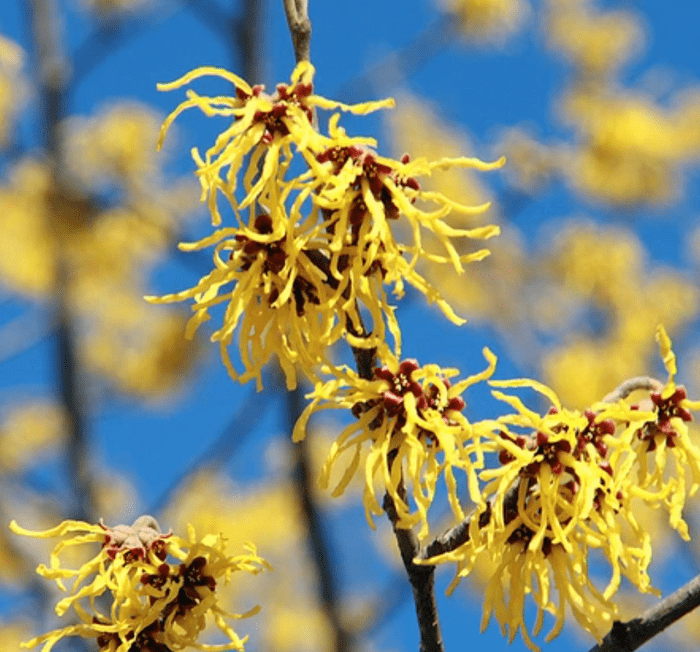
Witch Hazel
Hamamelis spp., Zones 3 to 9
Witch hazel is the bright light at the end of winter’s dark tunnel. Spring-flowering types explode with fragrant spiderlike flowers in yellow, copper or red as early as January. These deciduous shrubs are undemanding and tough, with stunning fall foliage and winter flowers. Plant in full sun to part shade. For a yellow flowering shrub, try Arnold Promise, which grows 12 to 15 feet high and wide.
Why we love it: Showy, fragrant flowers provide colorful winter interest. Gray-green leaves turn yellow-orange in cool weather.
Psst—we found more early blooming flowers for your garden.
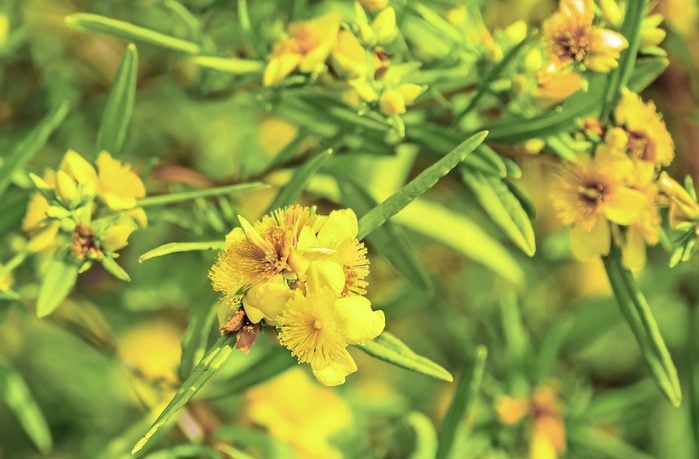
Kalm St. Johns Wart
Hypericum kalmianum, Zones 4 to 7
This shrub’s blue-green foliage is the perfect backdrop for the sunny yellow flowers. You’ll enjoy the buzz of visiting bees and, for those in more mild climates, the evergreen foliage. For a more compact cultivar, try Ames, which grows 2 to 3 feet tall and wide.
Why we love it: Not only does this adaptable plant tolerate drought conditions once it’s been established, but it also handles poor soil.
Small yard? Try the top 10 small shrubs for small spaces.
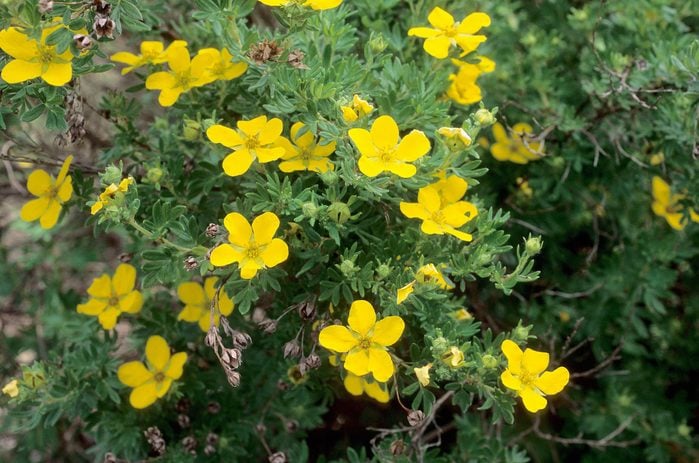
Potentilla
Potentilla fruticosa, Zones 2 to 6
The deep golden yellow flowers look stunning all season and attract local bees. To keep this traditional summer bloomer looking its best, regularly prune out a third of the old stems. Try Dakota Sunspot. It grows up to 36 inches tall and 3 to 4 feet wide.
Why we love it: Though it prefers to be in full sun with well-draining soil, this hardy shrub can withstand both poor, dry soils and extreme cold.
If yellow is your favorite color, check out the top 10 classic yellow flowers.
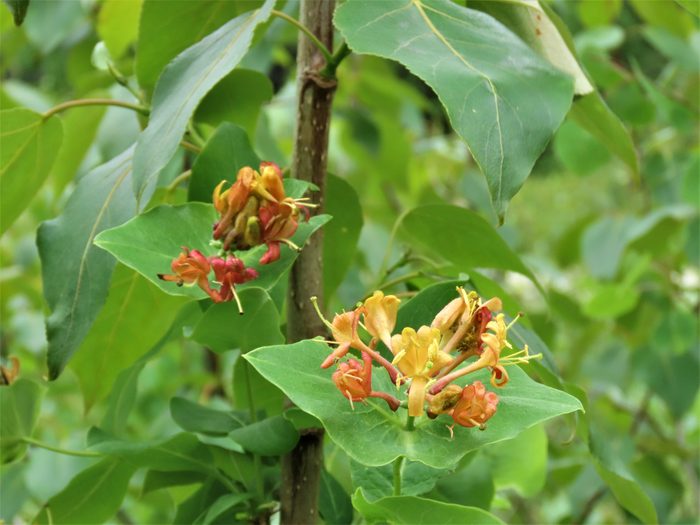
Bush Honeysuckle
Diervilla spp., Zones 4 to 7
This native shrub, which grows 3 to 5 feet tall and wide, is not invasive, unlike Lonicera japonica. Bunches of yellow blooms attract pollinators in the middle of summer. For a more compact option, choose Cool Splash which features attractive white and green variegated foliage.
Why we love it: Bush honeysuckle is a host plant for the fawn sphinx moth, and birds eat seeds that come after the flowers.
Check out more alternatives to invasive shrubs.
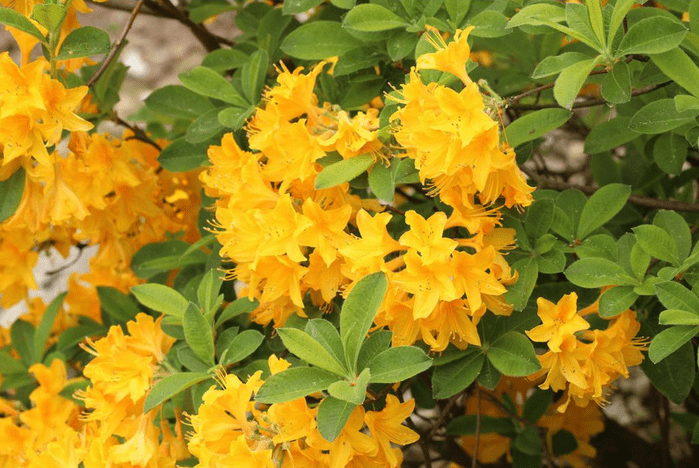
Yellow Azalea
Rhododendron spp., Zones 4 to 9
If you live up north and want to try growing an azalea shrub, consider Lemon Lights, developed by the University of Minnesota. Hardy to minus 30 degrees, this yellow flowering shrub reaches 4 feet tall and blooms in early spring.
Why we love it: The large yellow blossoms are a true delight after a long, gray winter.
Did you know you can grow azalea plants indoors?
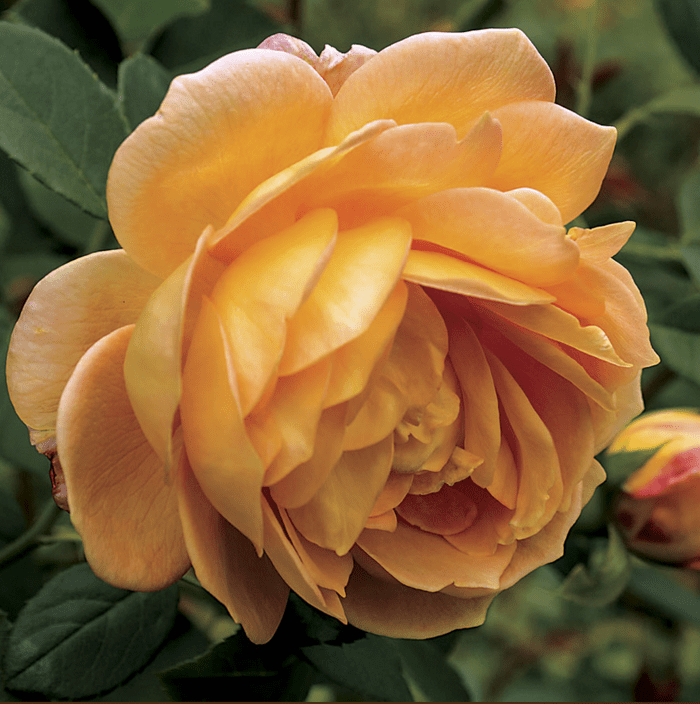
Yellow Roses
Rosa, Zones 5 to 10
Roses add classic beauty to any flower garden. Honey Perfume is a 4-foot-tall yellow flowering shrub rose that lives up to its name. A floribunda type, its fragrant flowers grow in clusters, so you can pick a whole bouquet with one snip of the shears. As the blossoms age, they soften to a creamier hue.
Why we love it: In a vase or along a path, Honey Perfume won’t let you pass without stopping to smell the roses.
Learn how to choose the best roses for your garden.
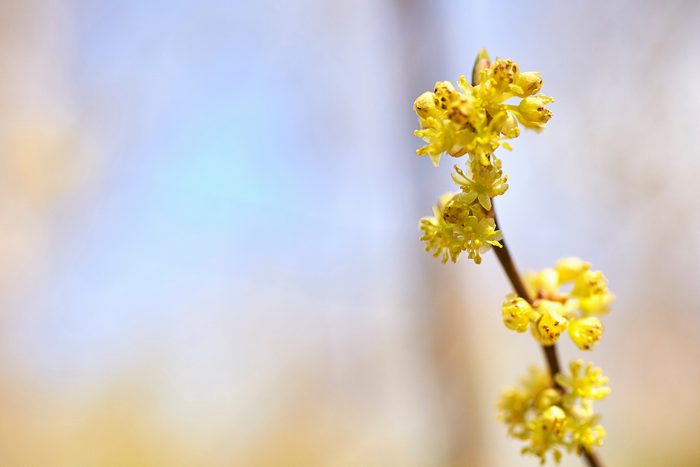
Northern Spice Bush
Lindera benzoin, Zones 4 to 9
In fall, the nicely-shaped shrub’s shiny red berries and blooms produce a sweet, spicy fragrance. In spring, look for clusters of small yellow flowers. About 6 to 12 feet tall when grown, this hardy host is commonly found in low woods, swampy areas and along streams.
Why we love it: Wood thrushes and more than 20 other bird species flock to backyards to gobble up the juicy red berries. It is also a host plant for the spicebush swallowtail and other swallowtail butterflies.
